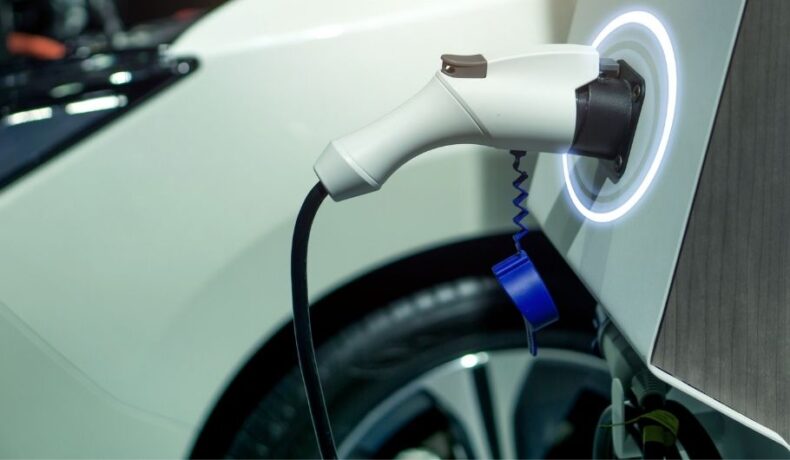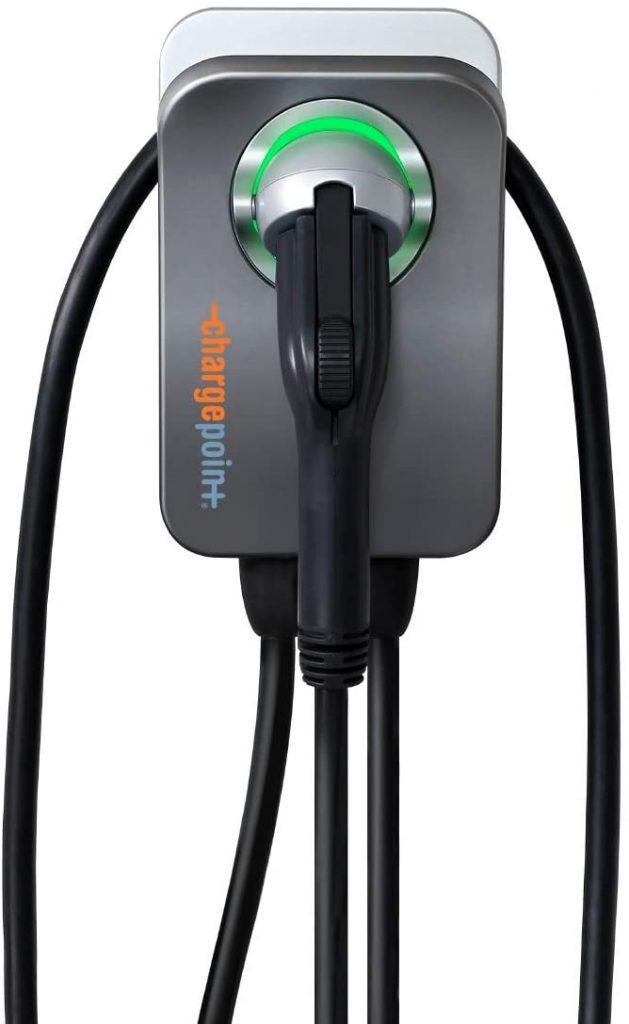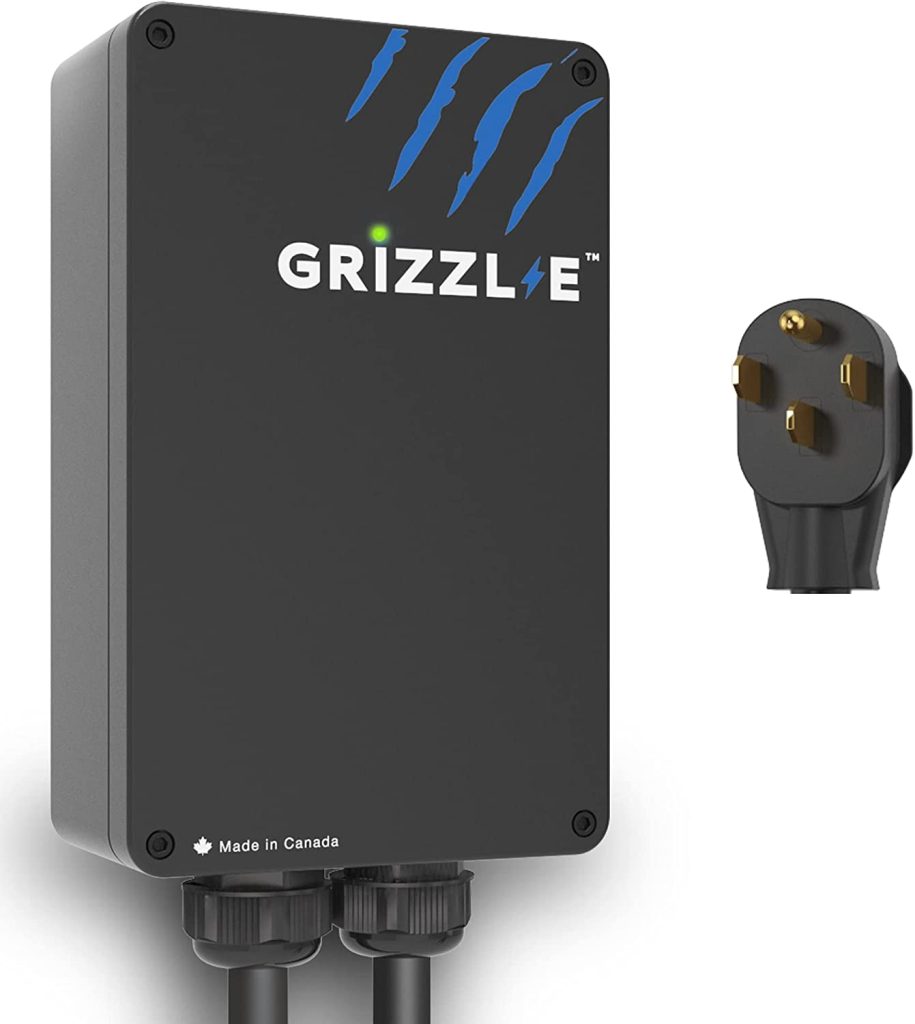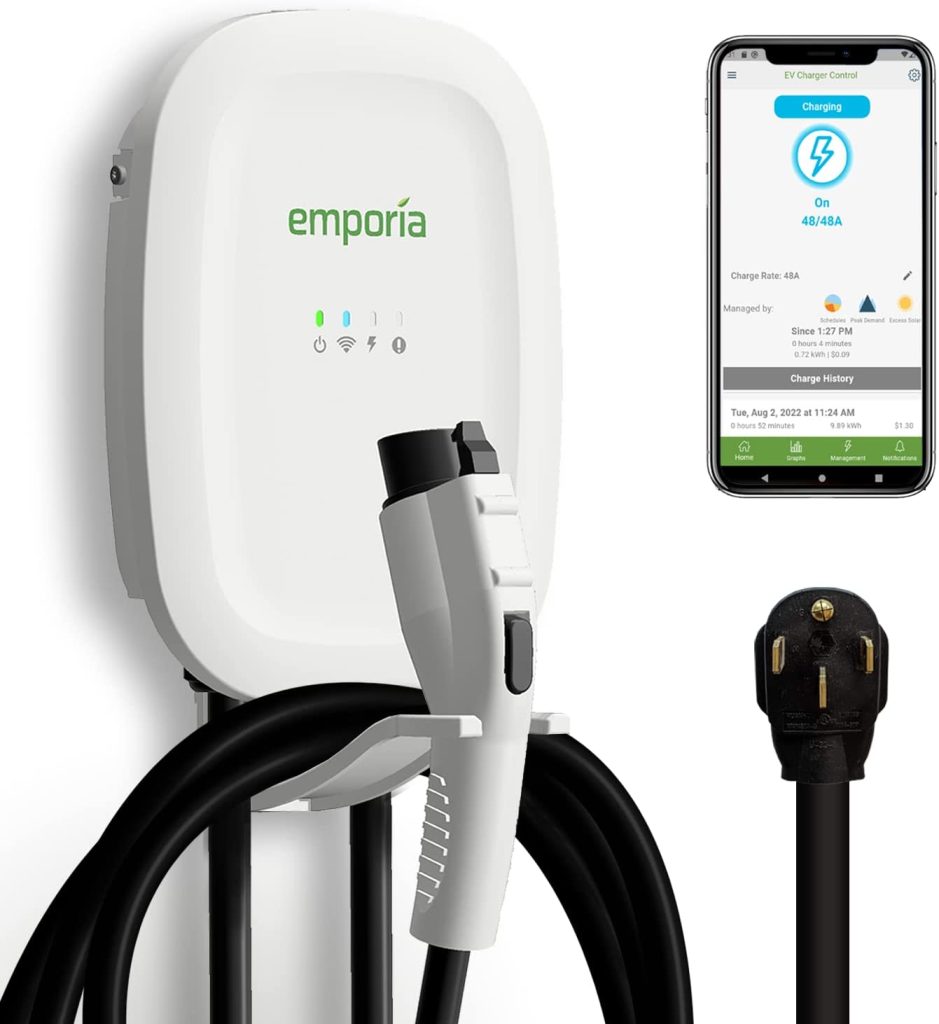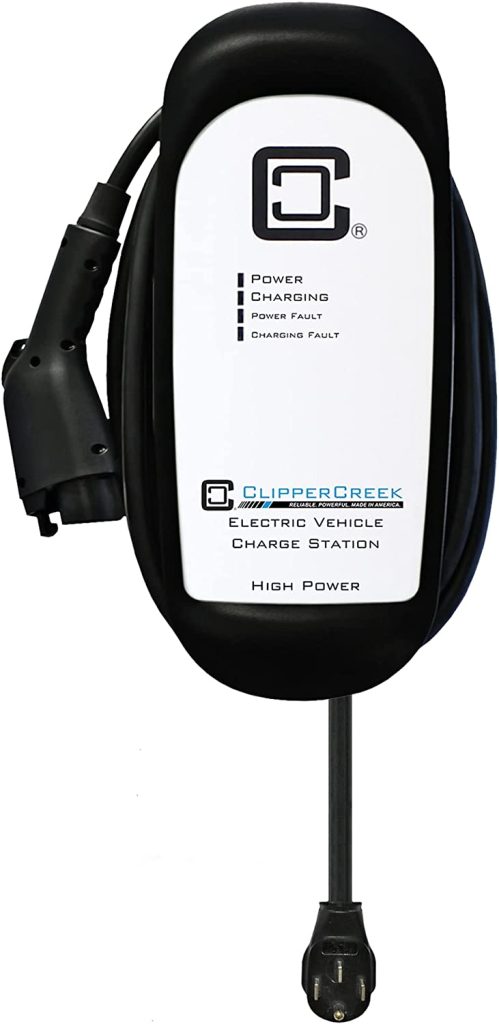As the world shifts towards sustainable energy sources, electric vehicles (EVs) have become an increasingly popular choice for drivers seeking to reduce their carbon footprint. However, one of the biggest concerns for those considering purchasing an electric vehicle is the availability and cost of charging stations.
While traditional gas stations are ubiquitous and relatively inexpensive, EV charging stations are still in the process of becoming more widely available. Moreover, they’re often costly to install and operate.
So what can you expect an EV charging station to cost?
Factoring in charger type, installation method, labor costs, and location, you can expect to pay $2790 to $6700 for a level 2 household EV charging station. This is the most frequently used charging station level found throughout U.S. households. There are tax credits available that can reduce the cost further. You can find a good tax estimator from TurboTax that can help you get a more accurate number.
But are they profitable, and how do they compare to public EV charging stations?
Let’s take a look.
Table of Contents
EV charging station levels
Before we outline the cost of an EV charging station, it’s important that we give you a brief overview of the various EV charging station levels available.
EV charger levels
Level 1 chargers

Level 1 chargers are the most basic type of EV charger. They use 120V AC outlets, which are compatible with the standard outlets found in most American homes.
This level of charging is slow. As such, most EV owners will use level 1 charging as a last resort or as a way to charge their vehicles overnight.
Level 2 Chargers

Level 2 home charging stations use a 240-volt connection to power your electric vehicle. This makes them quicker and more efficient than their level 1 counterparts.
However, they require a different plug, meaning they cannot be plugged directly into a standard outlet. As such, you’ll need to factor in the price of a dedicated 240V outlet when using this charging level.
Level 3 Chargers
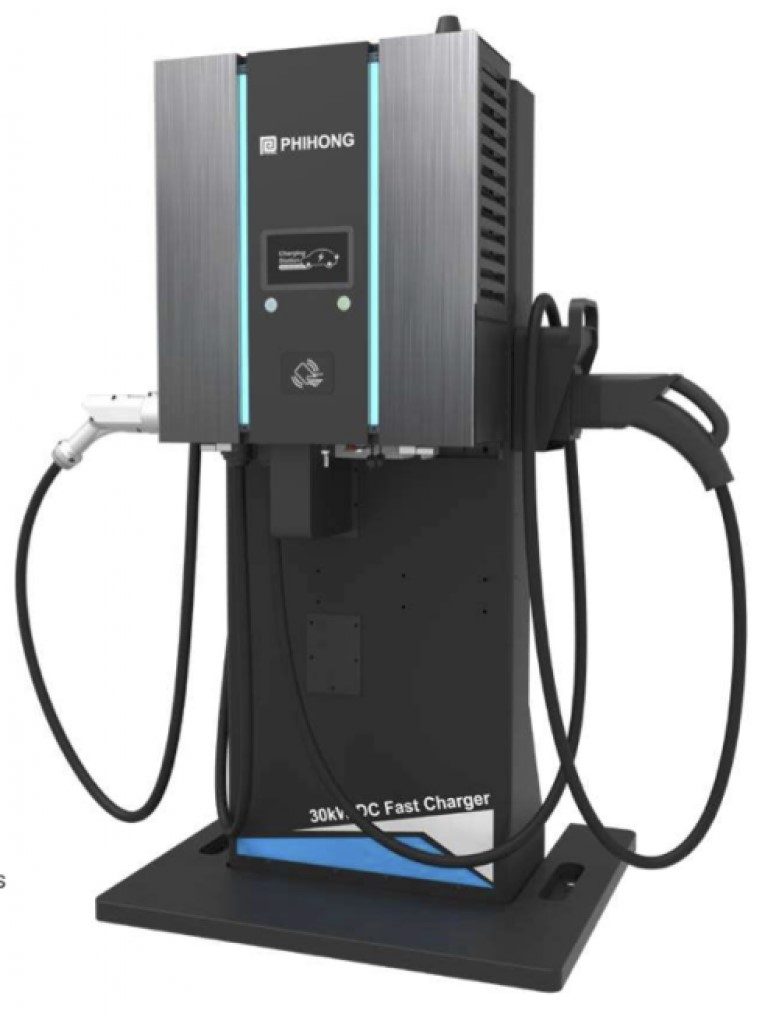
Level 3 chargers are known as DC fast chargers. These chargers take EV charging to the next level as they require a 400V or high-voltage input.
EV DC fast chargers can usually charge up to 80% of an EVs battery in as little as 20-30 minutes. This puts them on par with gas station EV chargers.
Additional info: Level 3 chargers are mostly made for commercial use. However, options at this level are slowly becoming available for households.
Related Reading: How Long Does It Take To Charge An EV? (120V, 220V & 440V)
Cost of an EV charging station (2025)
Several factors influence the cost of an EV charging station. These include:
- Charger type.
- Installation method.
- Labor.
- Location.
Charger type
Seen as we’ve already discussed the different charger levels, let’s jump right into the price points:
| Charging Station Level | Estimated Charging Time | Average Cost |
|---|---|---|
| Level 1 | 8-12 hours | Free-$500 |
| Level 2 | 4-6 hours | $300-$1,200 |
| Level 3 | < 1 hour | $12,000-$35,000 |
Installation method
There are two primary types of EV installation methods:
- Plugged-in: A plugged-in connector requires you to install a 240-volt wall outlet. The advantage of this type of connector is that it’s portable and easy to remove or repair. If you require a replacement, you need not worry about further installation costs as your outlet is already installed.
- Hardwired: A hardwired EVSE is wired directly into your home, meaning that it has an internal connection to your electrical wiring. The obvious downside of these connectors is that they aren’t portable, and replacing them can be expensive. However, you can use them outdoors, and they are often cheaper.
Installation cost summary:
| EVSE Type | Average Cost |
|---|---|
| Hardwired | $850 – $1,800 |
| Plugged-In | $1,000 – $2,200 |
Labor cost
EV charging stations need to be installed by certified electricians. These professionals can charge anything between $40-$100 an hour.
Here are some additional costs that you may need to account for:
- $120-$200 for a heavy-duty outlet installation.
- $300-$600 for a wall mount.
Labor cost summary
| Charging Station Level | Average Cost |
|---|---|
| Level 2 | $420-$800 |
| Level 3 | $2,750-$5,500 |
Location cost
Would you prefer to have your EV charging station indoors or outdoors?
Fortunately, many manufacturers make models that you can install in both locations, with little difference in the overall costs. If you decide to place your charging station outdoors, you must ensure your charger has an IP rating.
If you decide to go the bollard route, you’ll likely incur additional costs, as these installation types are more complex.
Location cost summary
| Location | Average Cost |
|---|---|
| Interior | $800 – $1,500 |
| Exterior | $800 – $2,500 |
What’s the verdict?
Factoring in charger type, installation method, labor costs, and location, you can expect to pay $2790-$6700 for a level 2 household EV charging station. This is the most frequently used charging station level found throughout U.S. households.
Related reading: At What Voltage Should You Charge An Electric Car?
EV chargers that we recommend
Now that we’ve broken down the average cost of an EV charging station, here are some chargers that we recommend:
1. ChargePoint EV charger
Product Information
| Charger level | Level 2 |
| Amperage | 50A |
| Protection | UL Listed for electrical safety, NEMA 3R weatherproof rated. |
| Cable length | 23 ft |
| Warranty | 3 years |
2. Grizzl-E level 2 EV charger
Product information
| Charger level | Level 2 |
| Amperage | Adjustable amperage (16A, 24A, 32A, 40A) |
| Protection | IP67 (Water resistant), Fire resistant. Over Current, Over Voltage, Under Voltage, Missing Diode, Ground Fault, and Over Temperature Protections. Self-Monitoring and Recovery, Power Outage Recovery. Built-in GFCI. |
| Cable length | 24 ft |
| Warranty | 3 years |
3. Emporia level 2 EV charger
Product information
| Charger level | Level 2 |
| Amperage | 48A |
| Protection | Manufactured to meet the safety criteria defined by these industry standards: NEC 625, SAE J1772, UL 817, UL 991, UL 2231, UL 2251, and UL 2594. |
| Cable length | 24 ft |
| Warranty | 3 years |
4. Pulsar plus level 2 EV charger
Product information
| Charger level | Level 2 |
| Amperage | 32A, 40A, 48A, 64A |
| Protection | Certified by ETL, an Independent Nationally Recognized Testing Laboratory, to UL 2594 standards |
| Cable length | 25 ft |
| Warranty | 3 years |
How much do public EV charging stations cost?
In 2022, there were a recorded 49,383 publicly accessible electric vehicle supply equipment (EVSE) stations in the U.S., with 123,013 ports.
If you’d like to have a look at this network, check out PlugShare’s app.
Public charging pricing models
There are three primary public charging pricing models:
- Pay as you go.
- Monthly subscriptions.
- Public charging rates.
Some charging stations combine the two, resulting in multiple variations for EV drivers. However, the most common pricing method and the most favored by drivers is pay-as-you-go.
Pay as you go
Public charging station rates are based on several factors:
- Time of use.
- Location.
- Length.
- Charger level.
- Commercial electricity price.
Let’s use California as an example.
This state is notorious for having one of the highest electricity rates in the U.S. Additionally, it has time-of-use pricing. This varies by time, days of the week, and even seasons.
Related Reading: How to build a DIY EV charging station
Subscriptions
Most EV drivers don’t want to get tied down by monthly subscription/membership fees. With that being said, they can be very worthwhile, as becoming a member of a charging network provides you with easy access to public stations.
Electrify America is one such company that offers a membership. All you have to do is download the app, sign up, and make a payment. For example, if you live in California and use Electrify America’s membership, you’d save $0.12 per kWh.
For the networks that offer subscription memberships, the monthly rates range from $4 to $7.99.
Public charging rates
A site-host owner or EV charging network establishes these rates. For instance, a site host may want to offer free public charging to incentivize customers to use their retail stores. In doing so, they will increase “dwell time”.
In saying that, the method of charging “by the minute” is far more common. Additionally, you may see “pricing per charging session” and “per kWh”.
Public charging idle fees
You’ll notice that charging networks impose idle fees on their EV customers. This is to incentivize the proper use of their charging stations. These fees also vary by network and location.
An idle fee can range from $0.40 – $1.30 per minute.
Note to our readers: If you’re looking for a comprehensive guide that compares the public EV charging networks, check out My EV.
Are EV Charging Stations Profitable?
There is a lot to consider before answering this question.
Remember, electricity rates are subject to multiple factors, such as location, time of year, day of the week, and time of day. Fortunately, electricity usage and costs are at their lowest late at night — this is when most EV charging is done.
Additionally, you must determine your charging method — home vs. public charging.
Electric vs. gas-powered vehicles: price comparison
Let’s compare the cost of powering electric vehicles vs. gas-powered vehicles.
Car And Driver conducted a 3-year cost analysis to determine which type of car is cheaper. In doing so, they analyzed the energy usage costs by taking 4 cars (2 electric, 2 gas) and relevant gas and electricity pricing data.
They used the following cars:
- Mini: 3.2-gal/100 miles
- Mini Electric: 31-kWh/100 miles
- Hyundai Kona: 3.3 gal/100 miles
- Hyundai Kona Electric: 27-kWh/100 miles
Gasoline data
Here, the national average gas price in February 2020 was used; $2.44 for regular and $3.11 for premium (the Mini requires higher-grade fuel).
The following are gasoline costs for 45,000 miles driven by the two gas-powered vehicles:
- Mini Hardtop: $4,478
- Hyundai Kona: $3,623
Electricity data
The average kW rate of $0.1282/kW in the United States for February 2020 was used. The split between at-home and on-the-go charging was also considered.
The following are electrical costs for 45,000 miles driven by the EVs:
- Mini Electric: $1939
- Kona Electric: $1723
As you can see, there is an average price difference of $2219.50 in favor of electric vehicles.
Property price incentive (a bonus)
New research conducted by Realtor.com has found that proximity to EV charging stations has become one of the latest indicators of property value.
The website used data from OpenChargeMap to map 19,743 charging stations across 6,980 zip codes, then analyzed the housing markets in the top 20 cities with the most stations.
The combined median listing price for these areas is $782,000.
Homes in locations suited to EV drivers have listing prices that are 1.5 times higher than their surrounding metro areas and 2.6 times higher than the rest of the country.
In short: it doesn’t just pay to have an EV with a household charging station; it also pays to be situated near public ones.
Related Reading: Electric Car Battery (Everything you need to know)
Should I install a home EV charging station or use public ones?
While public charging stations are fantastic for on-the-go charging, you must have your own home EV charging station.
According to the U.S. Department of energy, over 80 percent of EV charging happens at home, where EV owners have set up their own chargers.
In addition to being incredibly convenient, having your own home EV charging station will also save you money in the long run.
3 Tips when using an EV charging station
Never reach full charge
Try to avoid fully charging your EV to full capacity. This is because lithium-ion batteries prefer to operate under an 80% state of charge (SoC). Not charging fully allows space for regenerative braking to convert kinetic energy into usable energy if your battery has enough space.
Avoid deep discharging
If you let your EV battery discharge completely before recharging, it can reduce overall battery life. If your battery dips down near the 30% mark, you need to charge it so that it won’t get any lower.
Protect your connector
Holster the EV connector when not in use to prevent dirt and moisture from reaching the metal pins inside.
FAQs
What is the lifespan of a typical home EV charging station?
The average lifespan of a home EV charging station is around 10 to 15 years, depending on usage, maintenance, and environmental factors. However, advancements in technology might require an upgrade before the end of its lifespan to stay compatible with newer EV models.
Can I use solar panels to power my home EV charging station?
Yes, many homeowners integrate solar panels with their home EV charging stations to further reduce their carbon footprint and electricity costs. By using solar energy, you can charge your EV during the day using the sun’s power, making the process even more sustainable.
Is there a risk of overcharging my EV if I leave it plugged in overnight?
Modern electric vehicles are equipped with battery management systems that prevent overcharging. Once the battery reaches its full capacity, the charging process automatically stops. So, leaving your EV plugged in overnight should not pose a risk of overcharging.
How does weather affect the efficiency of my EV charging station?
Extreme cold or hot temperatures can impact the efficiency of the charging process. Cold weather may slow down the charging speed, while very hot conditions might cause the EV to consume more power for cooling the battery during charging. It’s always a good idea to install your charging station in a sheltered location, like a garage, to mitigate these effects.
Are there any safety concerns associated with home EV charging stations?
When installed and maintained properly, home EV charging stations are safe. It’s crucial to have the installation done by a certified electrician and to regularly inspect the station for any wear or damage. Additionally, always ensure that the charging station has proper safety certifications and features like ground-fault protection.
Can I use my home EV charging station for vehicles from different manufacturers?
Most home EV charging stations use a universal connector (like the J1772 in the U.S.) that is compatible with a wide range of electric vehicles. However, always check the compatibility before purchasing a charging station, especially if you plan to charge vehicles from different manufacturers.
Final thoughts
EV charging stations come with a high upfront cost but are an invaluable long-term investment.
If you’re in the market for one, take the time to do the necessary research before purchasing.
As always, if you have any further questions, please feel free to reach out to us in the comments section below or follow us on Twitter.

